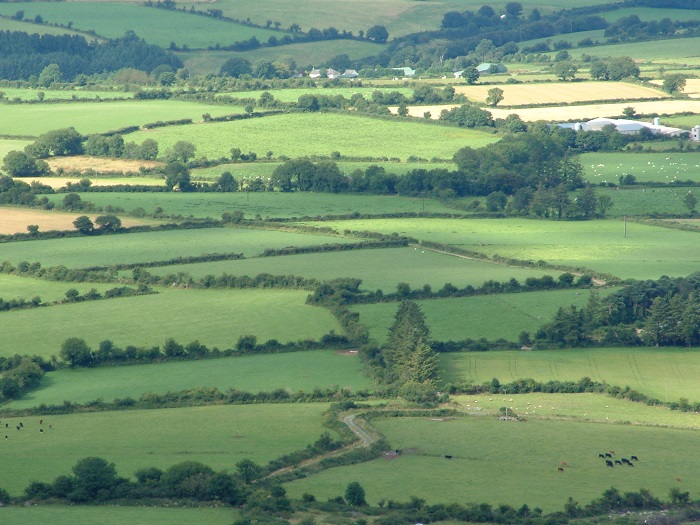12 July 2023
Explainer: What is and why is a new MACC needed?

The third iteration of the Teagasc Marginal Abatement Cost Curve (MACC) was published earlier today, July 12th. Presented in graph form, the Teagasc MACC identifies the most cost-effective pathway to reduce greenhouse gas (GHG) emissions and enhance carbon sequestration.
Speaking from the launch, Professor Gary Lanigan, one of the authors of the MACC, said: “It ranks those mitigation options in terms of cost benefit – the least expensive to the most expensive. It’s a way then for policy makers to be able to pick and choose which measures are going to be the most effective, which are going to be the most costly, which are the least costly, and really it is to give stakeholders and policy makers a steer in terms of the most cost effective measures.”
Why is a new Teagasc MACC needed?
Today’s launch follows the previous unveiling of Teagasc MACCs back in 2012 and 2018. In the intervening time, the publication of new scientific research findings in relation to carbon mitigation strategies has occurred, and significant policy change has been introduced.
Not limited to, but some of the most significant policy changes include the EU Green Deal and the Climate and Low Carbon Development Act. The latter requires the agricultural sector to reduce from the 2018 level of greenhouse gases of 23 MT CO2 eq per year, by 25% to 17.25 MT CO2 eq per year by 2030.
In its ability to present greenhouse gas mitigation measures, it is important to note that a MACC cannot be static or definitive. The potential for GHG abatement, as well as the associated costs/benefits, will change over time as on-going research programmes deliver new mitigation measures, or as socio-economic conditions evolve. Therefore, it is important that MACCs are updated to reflect these changes.
What’s different compared to the last MACC?
New agriculture GHG mitigation measures have been added to the current MACC, with one significant change being the speed at which mitigation measures are taken on board by farmers.
“Different to the previous MACC,” Gary explained, “we have different speeds of uptake for the different measures. In the previous MACC, we assumed a linear uptake of measures from 2021 across to 2030. This time we tailor the uptake of measures depending on the how new the measure is or how well known the measure is.
“We frontload some measures, such as for example protected urea or low emissions slurry spreading. And then for newer measures, such as feed additives for example, we backload those measures in terms of uptake.”
Some of the other key changes to the MACC include:
- The FAPRI Ireland model has been used to update the animal number projections to 2030.
- This projects a small decline in the overall bovine herd size.
- These projections are the same as those provided by Teagasc for the 2023 EPA projections of GHG inventories.
- The agricultural efficiency measures (which reduce the carbon footprint but only reduce absolute emissions if the volume of farm output is not increasing) have been separated from those measures that will reduce the absolute emissions. These include such measures as animal health and extended grazing.
- New measures have been added, including age at finishing, feed additives, diversification etc.
- The contribution of some existing measures have been adjusted based on new science (particularly dairy Economic Breeding Index), which has emerged over the last five years and coupled it with forthcoming science.
- Two adoption pathway rates for GHG mitigation measures have been established along with three possible scenarios for how animal numbers might evolve.
Pathways and scenarios
Gary also outlined the scenarios and pathways included in the MACC. Three scenarios with differing levels of agricultural activity, based on different projected livestock numbers out to 2030, are included. The three potential scenarios all have lower livestock numbers in 2030 compared to the 2022 herd, and are based on the influence of existing policies and future market forces.
The mitigation of Greenhouse gases under these three agricultural activity scenarios are then assessed based on two different uptake pathways outlining a high (Pathway 1), and a very high (Pathway 2), rate of adoption of mitigation measures by farmers.
The new MACC shows that agriculture’s target of reducing greenhouse gases by 25% can be achieved under Scenario 1 (base case or most likely scenario) with Pathway 2. In other words with projected livestock numbers of 6.785 million head in 2030, and with an ambitious level of technology adoption by farmers to mitigate GHGs.
The base case scenario, Scenario 1, predicts 8% growth in dairy cow numbers relative to 2022 numbers and a 29% reduction in suckler cow numbers over the period to 2030.
The very high (Pathway 2) rate of adoption of mitigation measures by farmers includes: achieving a three-month reduction in finishing age of cattle across the herd; replacing 90% of CAN fertiliser and 100% of straight urea with protected urea; the use of feed additives to reduce enteric methane in half of dairy cows; and the uptake of diversification options to displace ~140,000 livestock units.
Further details on the 2023 Marginal Abatement Cost Curve for 2023 are available here.
